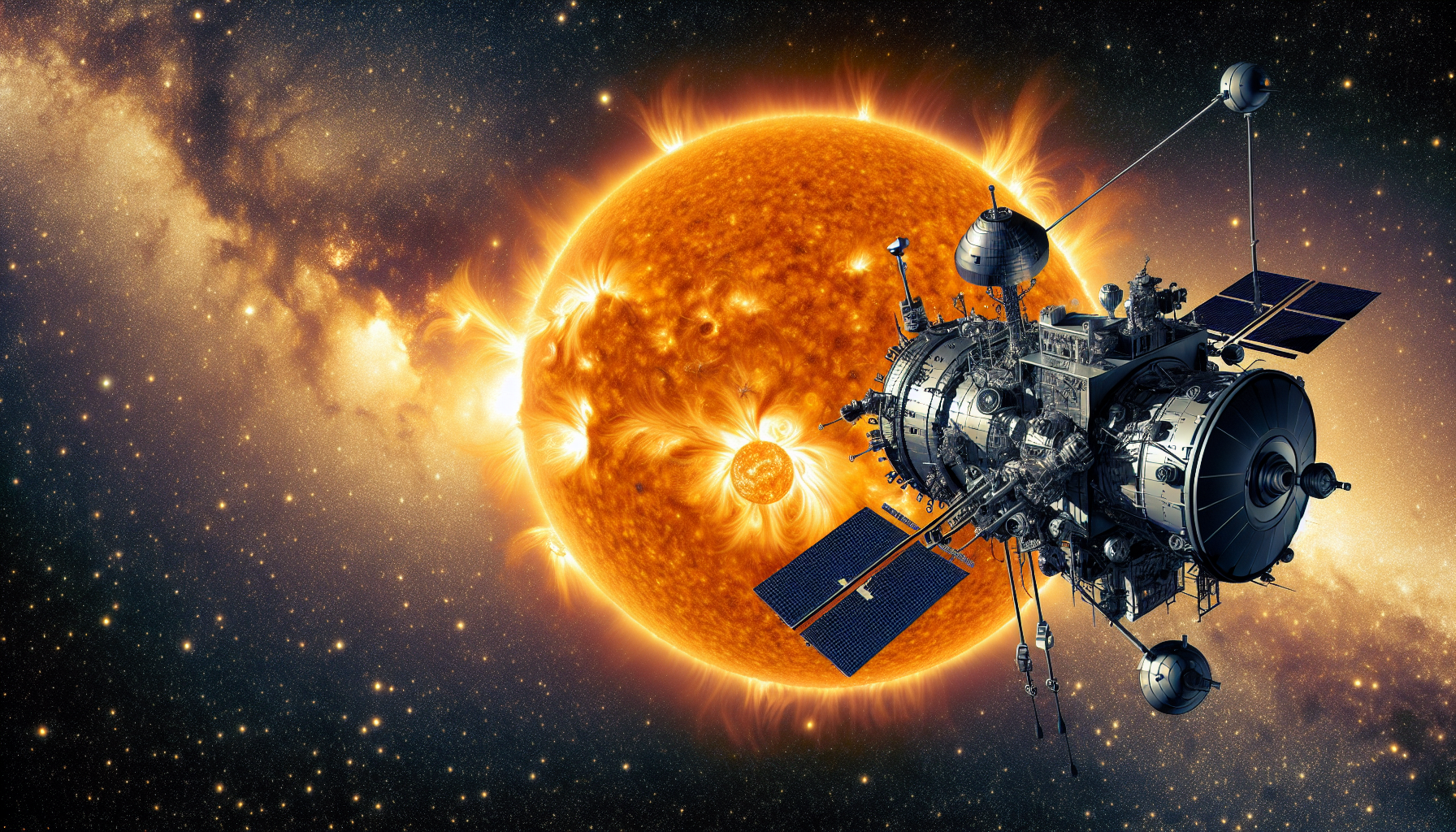
NASA’s Parker Solar Probe: An Extraordinary Expedition to the Sun
The Closest Encounter with the Sun
NASA’s Parker Solar Probe has achieved a groundbreaking moment in space exploration by making the closest approach to the sun ever recorded. On December 25, 2024, the probe journeyed to a mere 3.8 million miles from the solar surface, granting an extraordinary perspective of the sun’s corona. To put this distance into context, if the Earth and the sun were one foot apart, the Parker Solar Probe would be only half an inch away from the sun. This astonishing achievement enables scientists to study solar events with unmatched precision.
Observing Solar Wind and Coronal Mass Ejections
During its monumental flyby, the Parker Solar Probe employed its Wide-Field Imager for Solar Probe (WISPR) to document a timelapse of the sun’s outer atmosphere. The resulting images show how solar wind behaves right after its release, providing critical insights into space weather. The probe also recorded coronal mass ejections (CMEs), which are large eruptions of solar wind and magnetic fields extending beyond the solar corona. Grasping these events is essential for anticipating space weather that can affect Earth.
The Significance of Understanding Space Weather
Space weather, influenced by solar wind and CMEs, poses major risks to Earth’s technological systems. These solar phenomena can interfere with satellite functions, communication networks, and even electrical grids. By monitoring the origins of these risks, scientists can enhance prediction models and create improved protection strategies. As Nicky Fox, associate administrator at NASA’s Science Mission Directorate, noted, witnessing these events directly represents a significant leap in space weather research.
Ongoing Exploration and Upcoming Missions
After its December flyby, the Parker Solar Probe equaled its record distance from the sun in later passages in March and June. The probe is set for another close encounter on September 15, proceeding with its mission to collect vital information about the sun’s behavior. Each approach provides fresh chances to expand our comprehension of the sun and its effects on the solar system.
Conclusion
NASA’s Parker Solar Probe is transforming our understanding of the sun by offering detailed observations of solar wind and coronal mass ejections. This mission not only broadens our insight into space weather, but also aids in safeguarding Earth’s technological infrastructure against solar disruptions. As the probe proceeds on its journey, it is poised to reveal further mysteries of our nearest star.
Questions & Answers
Q1: What is the main goal of the Parker Solar Probe?
A1: The primary goal of the Parker Solar Probe is to investigate the sun’s outer atmosphere, known as the corona, and to comprehend the behavior of solar wind and coronal mass ejections.
Q2: Why is it essential to study solar wind?
A2: Understanding solar wind is vital because it influences space weather, which can disrupt satellite communications, navigation systems, and power infrastructures on Earth.
Q3: What was the closest distance the Parker Solar Probe reached to the sun?
A3: The Parker Solar Probe reached its closest distance at 3.8 million miles from the solar surface, setting a new record for proximity to the sun.
Q4: What tools does the Parker Solar Probe use to collect data?
A4: The probe utilizes the Wide-Field Imager for Solar Probe (WISPR) to acquire images and information regarding the sun’s corona and solar wind.
Q5: How does the Parker Solar Probe aid in predicting space weather?
A5: By offering real-time observations of solar events, the probe enhances forecast models for space weather, supporting the development of protective solutions for Earth’s technologies.
Q6: When is the Parker Solar Probe’s next planned approach to the sun?
A6: The next planned approach of the Parker Solar Probe is on September 15, as it continues its mission to gather information from the sun’s corona.